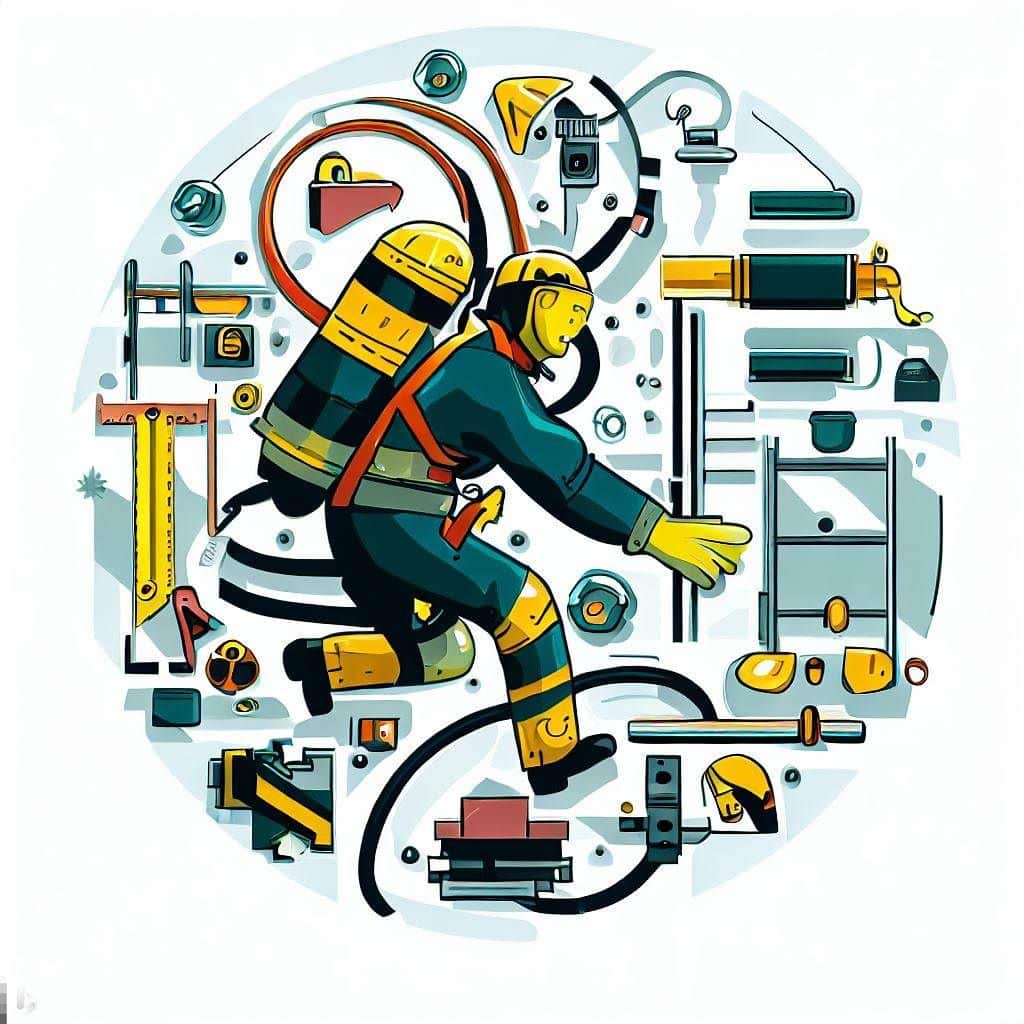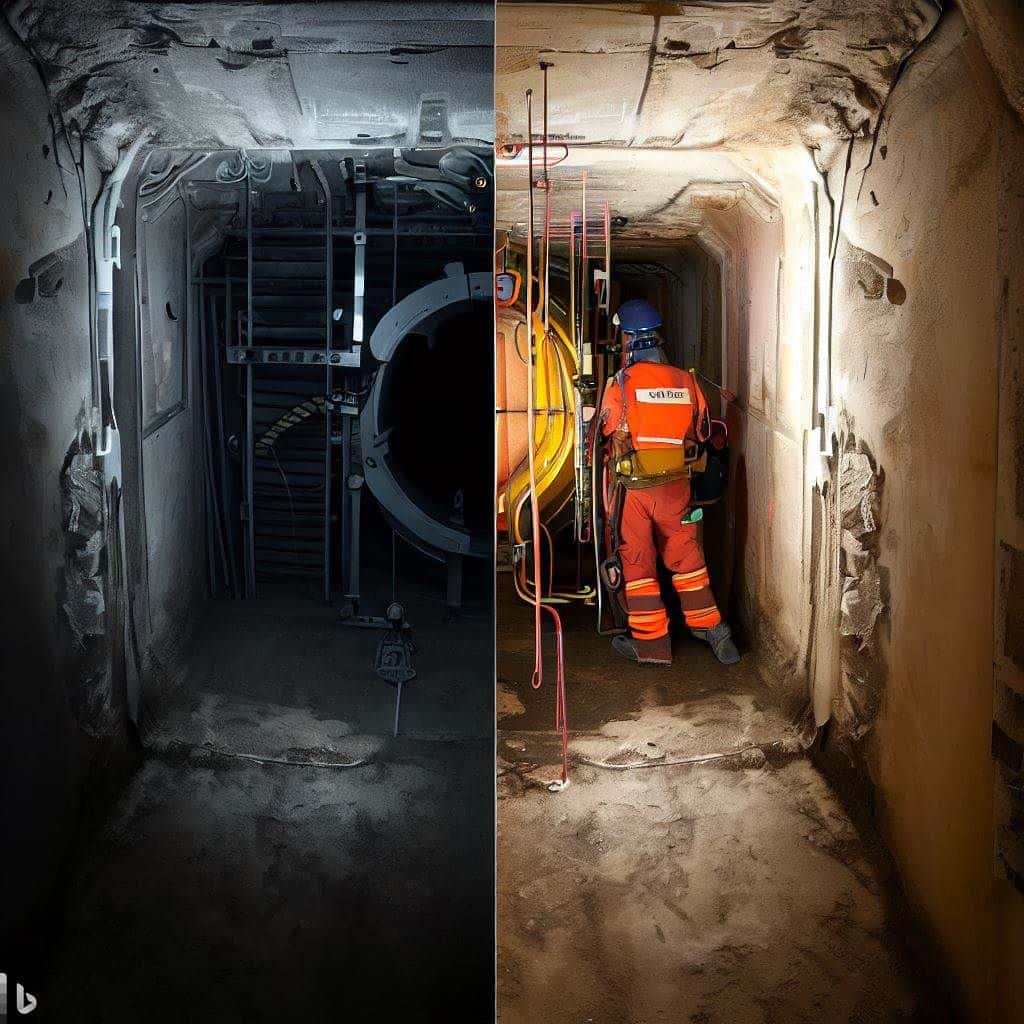Elevate Your Safety Skills: The Ultimate Guide to Low-Risk Confined Space Training and Certification
Working in confined spaces can be a dangerous and challenging task. Even low-risk confined spaces can present hazards that must be addressed to ensure worker safety. To effectively manage these risks, low-risk confined space training is essential for workers who perform tasks in confined spaces. This comprehensive guide will provide all the information about low-risk confined space training, certification, and best practices to ensure a safe working environment.
Low-risk confined space training is designed to equip workers with the knowledge and skills to enter, work within, and exit confined spaces safely. The training typically covers hazard identification, risk assessment, safe work practices, and emergency response procedures. It is essential for workers in various industries, including construction, manufacturing, oil and gas, utilities, etc.
As an experienced worker, I understand the importance of training in maintaining a safe work environment. Following this guide will gain the knowledge and skills needed to excel in your career and protect yourself and your colleagues in low-risk confined spaces.
Importance of Confined Space Training and Certification
Confined space training and certification are crucial for three main reasons: legal compliance, worker safety, and organizational reputation. Firstly, many jurisdictions require workers who enter confined spaces to complete a certified training course. This means obtaining low-risk confined space training, and certification protects yourself and your colleagues and ensures compliance with relevant laws and regulations.
Secondly, confined spaces present unique hazards and challenges that can result in serious injury or death if not properly managed. Low-risk confined space training enables workers to identify and mitigate these hazards, reducing the likelihood of accidents and enhancing overall workplace safety.
Finally, organizations that prioritize safety and invest in comprehensive employee training demonstrate a commitment to excellence, which can positively impact their reputation and bottom line. Obtaining low-risk confined space certification contributes to your organization’s safety culture, increasing productivity, employee satisfaction, and business success.

Identifying Low-Risk Confined Spaces
A confined space is generally defined as an area not intended for continuous human occupancy, has limited access and egress, and may contain toxic or flammable gases, engulfment risks, or atmospheric hazards. Low-risk confined spaces pose minimal risk to workers due to the absence of significant hazards or the implementation of adequate safety measures.
Examples of low-risk confined spaces include:
- Storage tanks with minimal risk of hazardous atmospheric conditions
- Sewer systems with proper safety measures in place
- Ductwork and ventilation systems without significant hazards
A qualified professional should conduct a thorough risk assessment to determine whether a confined space is considered low risk. This assessment should consider factors such as hazardous substances, the potential for engulfment or entrapment, and the potential for oxygen deficiency or enrichment.
Key Components of Low-Risk Confined Space Training
Low-risk confined space training typically covers several key topics to ensure workers are prepared to enter, work within, and exit confined spaces safely. Key components of low-risk confined space training include:
- Hazard Identification and Risk Assessment: Workers must be able to recognize potential hazards in confined spaces and assess the level of risk associated with them. This includes understanding the characteristics of confined spaces, the types of hazards that may be present, and the consequences of exposure to these hazards.
- Safe Work Practices: Workers must be familiar with safe work practices that minimize the risks of working in low-risk confined spaces. This includes proper use of personal protective equipment (PPE), ventilation and air monitoring, communication procedures, and more.
- Emergency Response Procedures: In an emergency, workers must know how to respond effectively to protect themselves and their colleagues. This includes understanding the roles and responsibilities of the rescue team, the proper use of emergency equipment, and the procedures for evacuating a confined space.
- Permit Systems and Documentation: Workers must know the permit systems and documentation required to enter confined spaces. This includes understanding the purpose of entry permits, the information required on the permit, and the procedures for obtaining and closing permits.
Steps to Obtain Low-Risk Confined Space Certification
To obtain low-risk confined space certification, workers must complete a training course from a reputable provider. The steps to obtain certification are as follows:
- Research and choose a training provider: Look for a training provider with a strong reputation, experienced instructors, and comprehensive course content that covers all the key components of low-risk confined space training.
- Enroll in a low-risk confined space training course: Once you have selected a provider, enroll in their low-risk confined space training course. The course duration may vary depending on the provider, but most courses can be completed within one to three days.
- Complete the training course: Participate actively in all training activities, including classroom instruction, practical exercises, and assessments.
- Pass the final assessment: At the end of the course, you must pass a final assessment to demonstrate your understanding of the course material. This may include a written test, a practical demonstration, or both.
- Obtain your certification: Once you have completed the course and passed the final assessment, you will receive your low-risk confined space certification. This certification should be maintained and renewed as required by your jurisdiction or employer.
Benefits of Low-Risk Confined Space Training for Employees and Employers
Low-risk confined space training offers numerous benefits for both employees and employers. These benefits include:
- Improved worker safety: By equipping workers with the knowledge and skills needed to enter, work within, and exit confined spaces safely, low-risk confined space training helps to reduce the likelihood of accidents and injuries.
- Increased productivity: Workers properly trained in confined space safety are more likely to complete tasks efficiently and effectively, leading to increased productivity and cost savings for the organization.
- Reduced liability: Employers who provide comprehensive confined space training for their employees can reduce their liability in the event of an accident or injury. This can lead to lower insurance premiums and a reduced risk of costly legal disputes.
- Improved organizational reputation: Organizations prioritizing worker safety and investing in comprehensive training demonstrate a commitment to excellence, which can positively impact their reputation and bottom line.
Best Practices for Safe Work in Low-Risk Confined Spaces
To ensure a safe work environment in low-risk confined spaces, workers should adhere to the following best practices:
- Conduct a thorough risk assessment: A qualified professional should conduct a risk assessment to identify potential hazards and determine the appropriate safety measures before entering a confined space.
- Follow permit systems and documentation requirements: Ensure all necessary permits are obtained before entering a confined space and follow the procedures outlined in the permit.
- Utilize proper PPE: Wear appropriate personal protective equipment, such as respiratory protection, gloves, and eye protection, as required by the specific confined space and task.
- Monitor atmospheric conditions: Continuously monitor the atmosphere in the confined space for hazardous conditions, such as flammable or toxic gases and oxygen deficiency or enrichment.
- Maintain proper ventilation: Ensure adequate ventilation to maintain a safe working environment within the confined space.
- Establish clear communication procedures: Ensure effective communication methods are in place between workers in the confined space and those outside, such as radio communication or hand signals.
- Develop and practice emergency response procedures: Workers should be familiar with the emergency response procedures for the specific, confined space and participate in regular drills to ensure they are prepared in the event of an emergency.
Renewing Your Low-Risk Confined Space Certification
Depending on your jurisdiction and employer requirements, your low-risk confined space certification may need to be renewed periodically to ensure that your knowledge and skills remain current. To renew your certification, you may be required to complete a refresher course or retake the initial training course. Keep track of your certification expiration date and plan to ensure that you maintain your certification status.

Top Training Providers for Low-Risk Confined Space Courses
Numerous training providers offer low-risk confined space courses. When selecting a provider, consider factors such as their reputation, the experience of their instructors, and the comprehensiveness of their course content. Some top training providers for low-risk confined space courses include:
- The National Association for Safety Professionals (NASP)
- The Occupational Safety and Health Administration (OSHA)
- The National Safety Council (NSC)
- The American Society of Safety Professionals (ASSP)
Conclusion: Enhancing Workplace Safety with Low-Risk Confined Space Training and Certification
In conclusion, low-risk confined space training and certification are essential for workers who perform tasks in confined spaces. By obtaining this training, you can enhance your safety skills, protect yourself and your colleagues, and contribute to a safety culture within your organization. By following the guidelines outlined in this guide, you will be well on your way to becoming a certified low-risk confined space worker.
Frequently Asked Questions:
How long does low-risk confined space certification last?
The duration of your certification will depend on your jurisdiction and employer requirements. In general, certifications may need to be renewed every one to three years.
Is online low-risk confined space training sufficient?
Online training can be a valuable resource for learning and refreshing your knowledge of confined space safety; however, hands-on practical training is also essential for developing the skills needed to work safely in confined spaces. When selecting a training provider, look for courses combining online and hands-on components.
What are the main differences between low-risk, medium-risk, and high-risk confined spaces?
Low-risk confined spaces pose minimal risk to workers due to the absence of significant hazards or the implementation of adequate safety measures. Medium-risk confined spaces present a higher level of risk due to the presence of hazards, such as hazardous atmospheres or the potential for engulfment. High-risk confined spaces pose the greatest risk to workers, with multiple significant hazards and often requiring complex rescue procedures.
Can I enter a confined space without low-risk confined space training?
Entering a confined space without proper training is not recommended and may violate legal requirements. Always obtain the appropriate training before working in confined spaces to ensure your safety and compliance with regulations.
